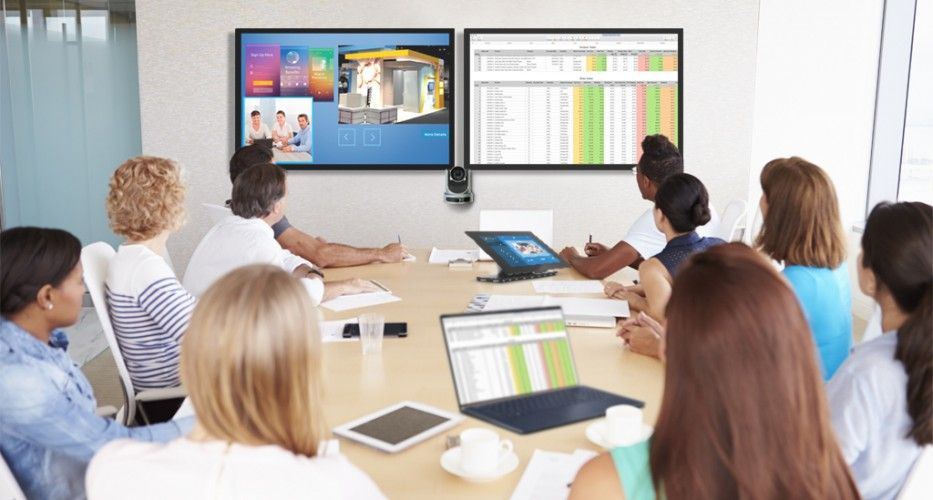As network video distribution systems become more commonplace in connected meeting spaces, integrators and end users are presented with new integration challenges. One of the more common concerns is how to ensure that connected video sources display where they need to with the least amount of human intervention. Here are a few things to keep in mind to ensure a flawless experience every time.
Disclaimer: this isn’t a comprehensive list of items to consider, but it is a good place to start!
HDCP
If you are looking to play a Blu-ray disc or share content from certain laptops, High-bandwidth Digital Content Protection (HDCP) can cause headaches if your infrastructure isn’t ready for it. This standard, belonging to DCP (Digital Content Protection), is designed to prevent HDCP encrypted content from being copied, or played on devices that aren’t HDCP compliant.
When HDCP encrypted sources are connected to a video distribution system, they must confirm that all connected sinks, repeaters, and displays are HDCP compliant—this is referred to as the authentication process. There are several different HDCP standards that are widely used (namely HDCP 1.4 and 2.2), which have different device and distance limitations. Ensuring that your infrastructure is suited for HDCP 1.4 and 2.2 will alleviate many of the headaches, including the common issue of no content showing up on the screen.
EDID
EDID, or Extended Display Identification Data, is another important tool in ensuring sources connected to a video distribution system show up on the desired outputs. EDID data lives in sinks, or displays, and communicates with a source (laptop, media player, etc.) on which video formats* are available, unavailable, and preferred. This handshake informs the source device what the optimal resolution and frame rate settings are to ensure video content is properly displayed.
Correctly setting EDID files and having the tools to read the EDID of a display and assign it to a particular input can turn a system from the proverbial "plug-and-pray" into the wonderful world of plug-and-play where everything works without worry.
Automatic Source Selection
If you ask 10 people how a perfectly automated system should perform, you’ll probably get about 12 answers, but that’s okay. Automating systems is a personal preference that is unique to each user.
When it comes to automatic sources election, or auto-switching, there are two methods to consider, priority-based automatic source selection or time-based automatic source selection.
Let’s dig into these options…
Priority Based
This allows users to rank the importance of each input in a given system to determine source selection. A practical example of this system might be:
In this example, the Rack PC is the lowest priority input. If the laptop or Blu-ray is turned on and a valid signal is detected, the video system will automatically switch to that input and away from the rack PC. This is appropriate for meeting rooms where there is a keyboard/mouse on the table that might get bumped (waking up the rack PC). In this instance, you don’t want the video system to switch off the active input to the rack PC.
Time Based
Time-based uses time as the primary indicator for whether or not to switch the active source. In this environment, it is assumed that connections are made only with the intent to share content. This is perfect for rooms with many input locations that don’t need to be used simultaneously.
Inputs can be placed in geographic locations that make sense, and whichever one is plugged in will become the active source. This can have drawbacks when there are static (non-moving) sources in the room, like an installed PC—whenever it wakes up (even if caused by an accidental mouse brushing) it is now the active source.
This blog was originally published at blogs.qsc.com/systems/2019/06/03/deconstructing-network-video-distribution and is reprinted with permission from QSC.
*A video format includes Resolution and Frame Rate




